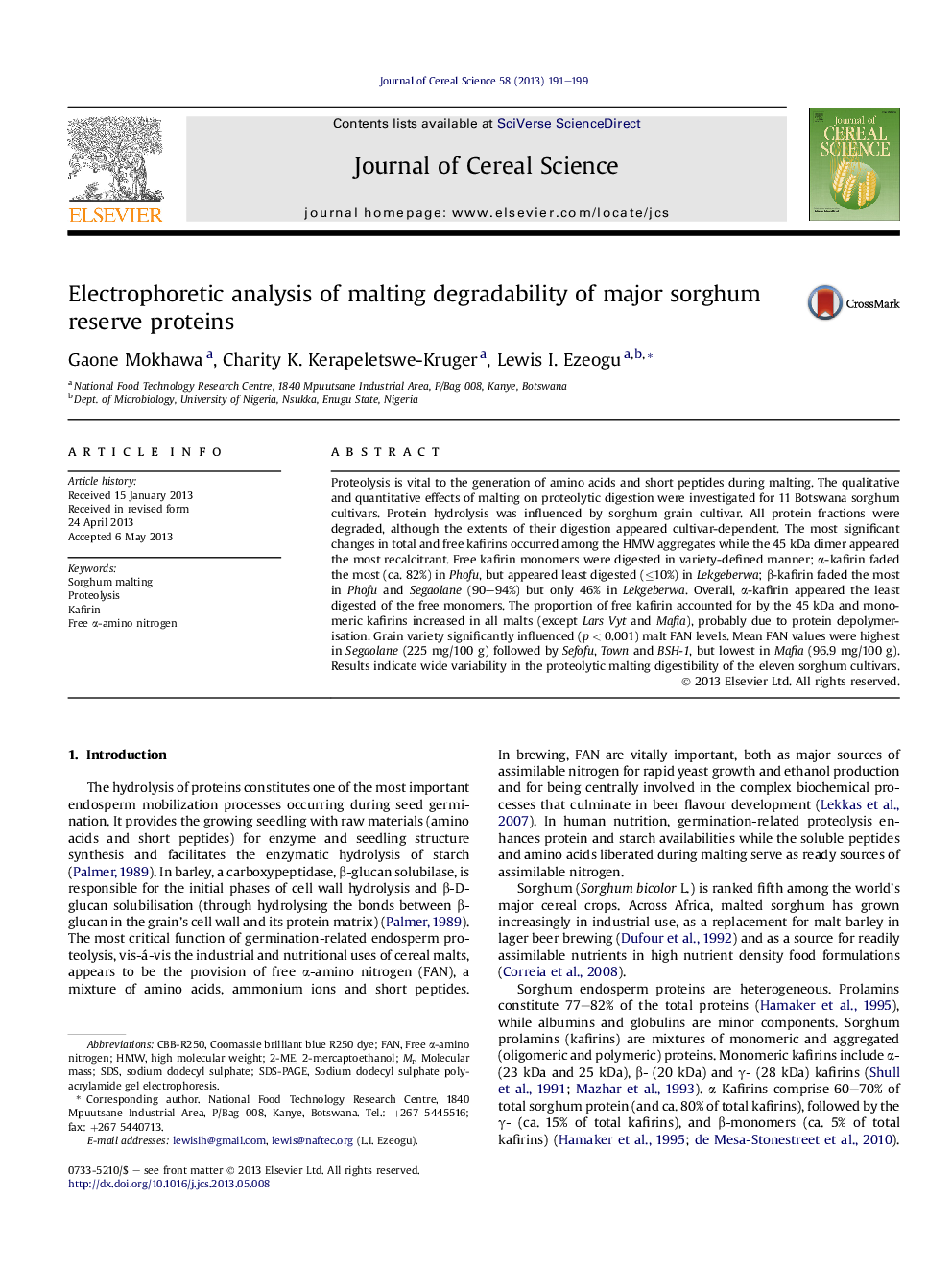| Article ID | Journal | Published Year | Pages | File Type |
|---|---|---|---|---|
| 4515897 | Journal of Cereal Science | 2013 | 9 Pages |
Abstract
Proteolysis is vital to the generation of amino acids and short peptides during malting. The qualitative and quantitative effects of malting on proteolytic digestion were investigated for 11 Botswana sorghum cultivars. Protein hydrolysis was influenced by sorghum grain cultivar. All protein fractions were degraded, although the extents of their digestion appeared cultivar-dependent. The most significant changes in total and free kafirins occurred among the HMW aggregates while the 45 kDa dimer appeared the most recalcitrant. Free kafirin monomers were digested in variety-defined manner; α-kafirin faded the most (ca. 82%) in Phofu, but appeared least digested (â¤10%) in Lekgeberwa; β-kafirin faded the most in Phofu and Segaolane (90-94%) but only 46% in Lekgeberwa. Overall, α-kafirin appeared the least digested of the free monomers. The proportion of free kafirin accounted for by the 45 kDa and monomeric kafirins increased in all malts (except Lars Vyt and Mafia), probably due to protein depolymerisation. Grain variety significantly influenced (p < 0.001) malt FAN levels. Mean FAN values were highest in Segaolane (225 mg/100 g) followed by Sefofu, Town and BSH-1, but lowest in Mafia (96.9 mg/100 g). Results indicate wide variability in the proteolytic malting digestibility of the eleven sorghum cultivars.
Keywords
Related Topics
Life Sciences
Agricultural and Biological Sciences
Agronomy and Crop Science
Authors
Gaone Mokhawa, Charity K. Kerapeletswe-Kruger, Lewis I. Ezeogu,
